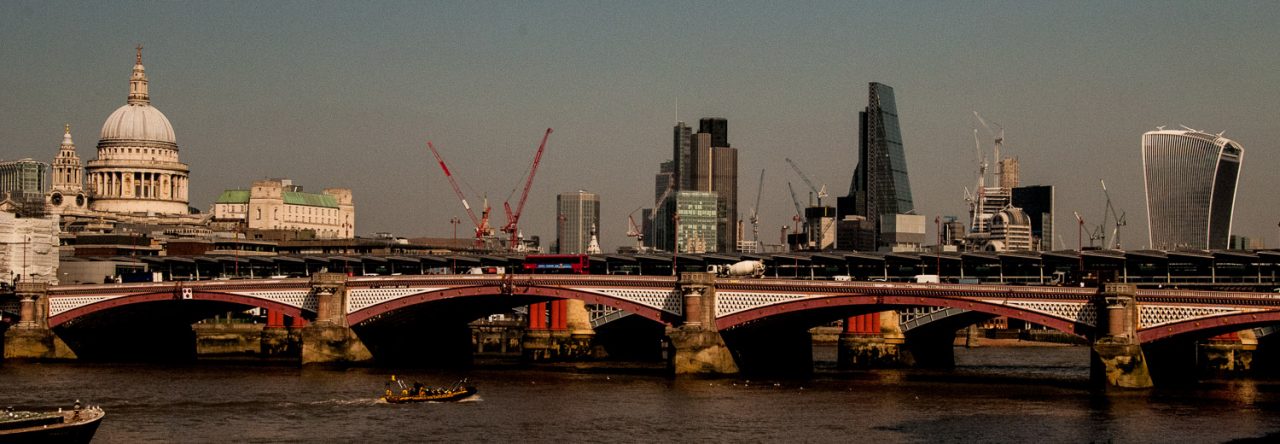After Remembrance Sunday every year it has become my habit to visit some of the City War Memorials, both to pay my respects and to read some of the moving tributes left by visitors.
The Tower Hill Memorial commemorates over 36,000 men and women of the Merchant Navy and Fishing Fleets who died in both World Wars along with the seafarers killed in the Falklands conflict of 1982.
The first was designed by Sir Edwin Lutyens and unveiled in 1928. The main structure is in Portland stone. It takes the form of a vaulted colonnade or pavilion reminiscent of a Doric temple but open at both ends …
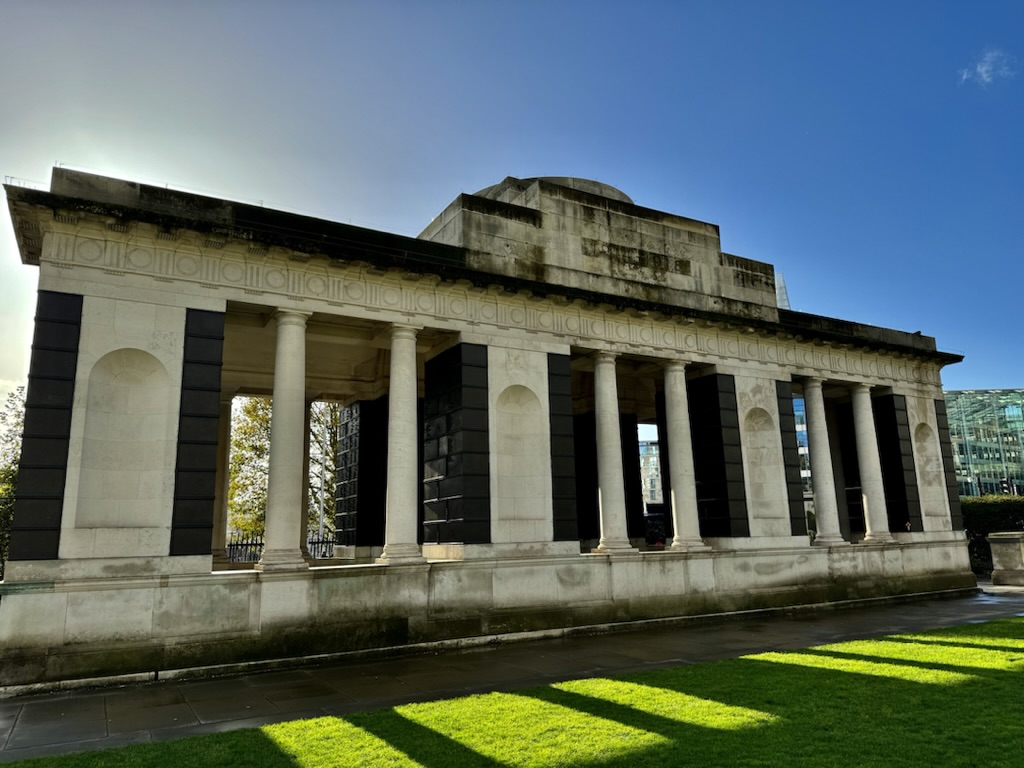
That’s All Hallows-by-the-Tower in the distance …
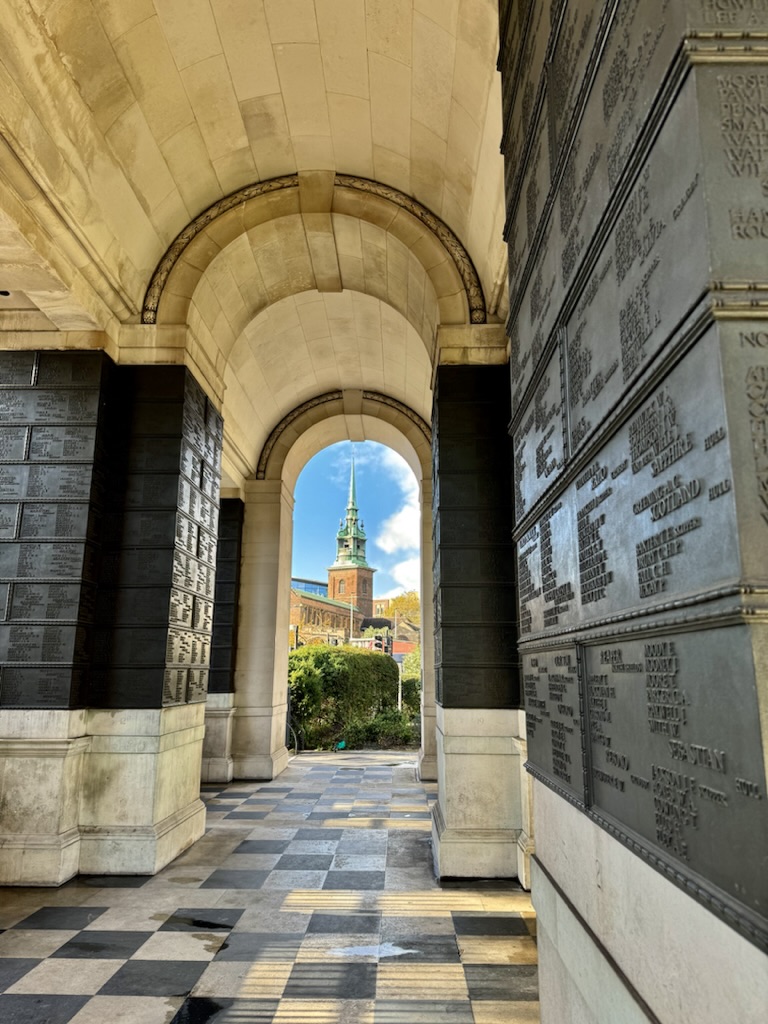
The second was designed by Sir Edward Maufe and unveiled in 1955 …

It is a sunken garden with the steps leading down to it flanked by a Mercantile Marine officer …

… and a seaman of the Merchant Service. Behind him, in his eyrie above what was once the Port of London Authority building, Father Thames points towards the sea …

The walls are covered with bronze panels with the names of the dead arranged alphabetically under their ships with the name of the Master or Skipper first in each case if they were among the lost. At regular intervals, between the inscription panels, are allegorical figures representing the Seven Seas.
A little boy rides a dolphin accompanied by seahorses …
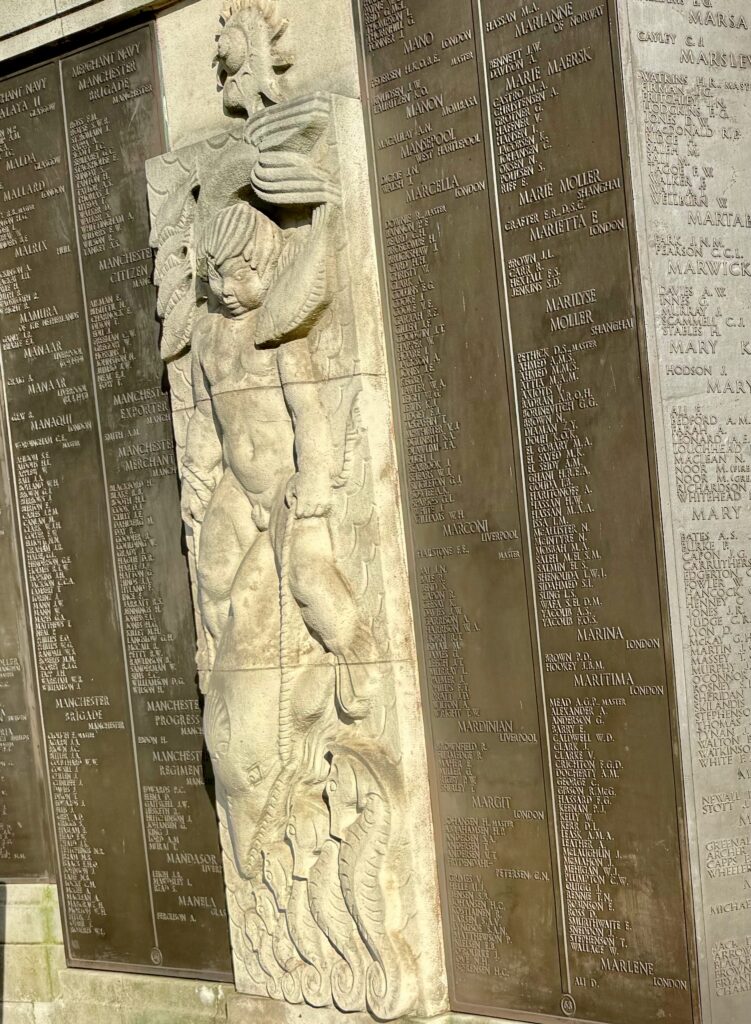
Neptune with his trident …
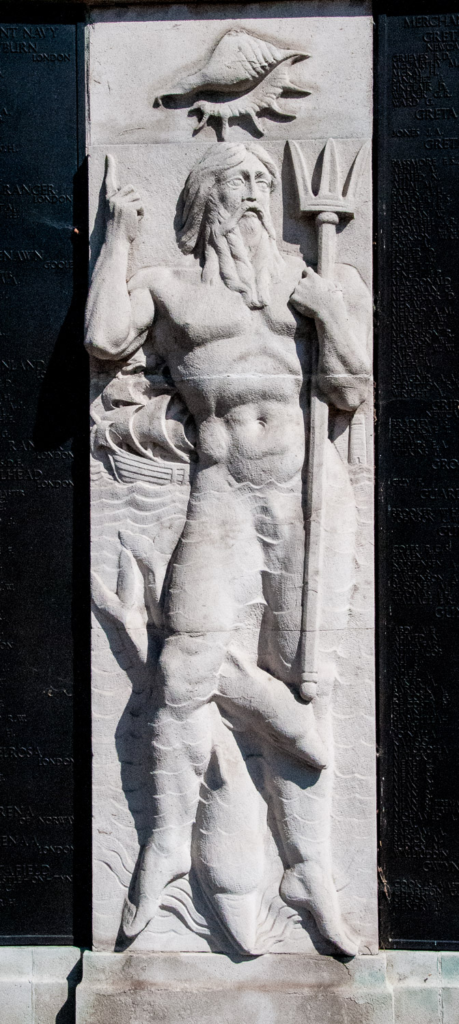
A mermaid combing her hair …

My eyes were drawn to these pictures of a lost sailor and his ship …

This is the sweet poem that was attached …
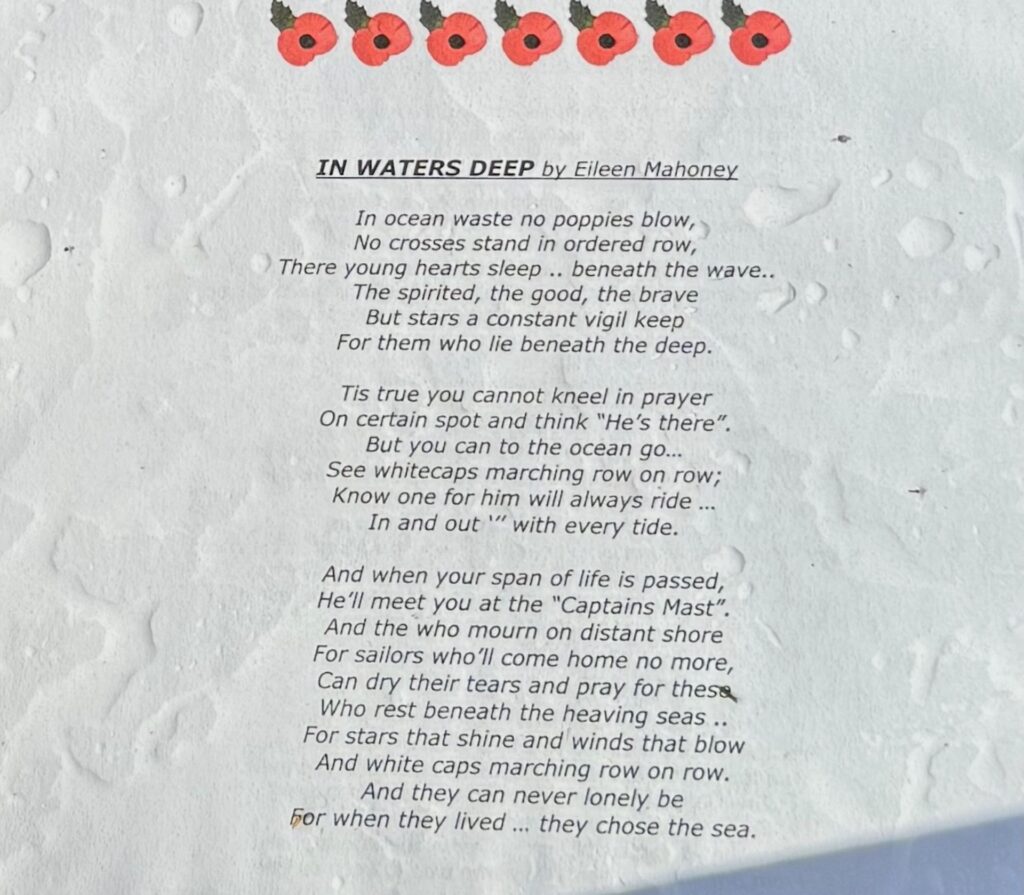
The Falklands Memorial …
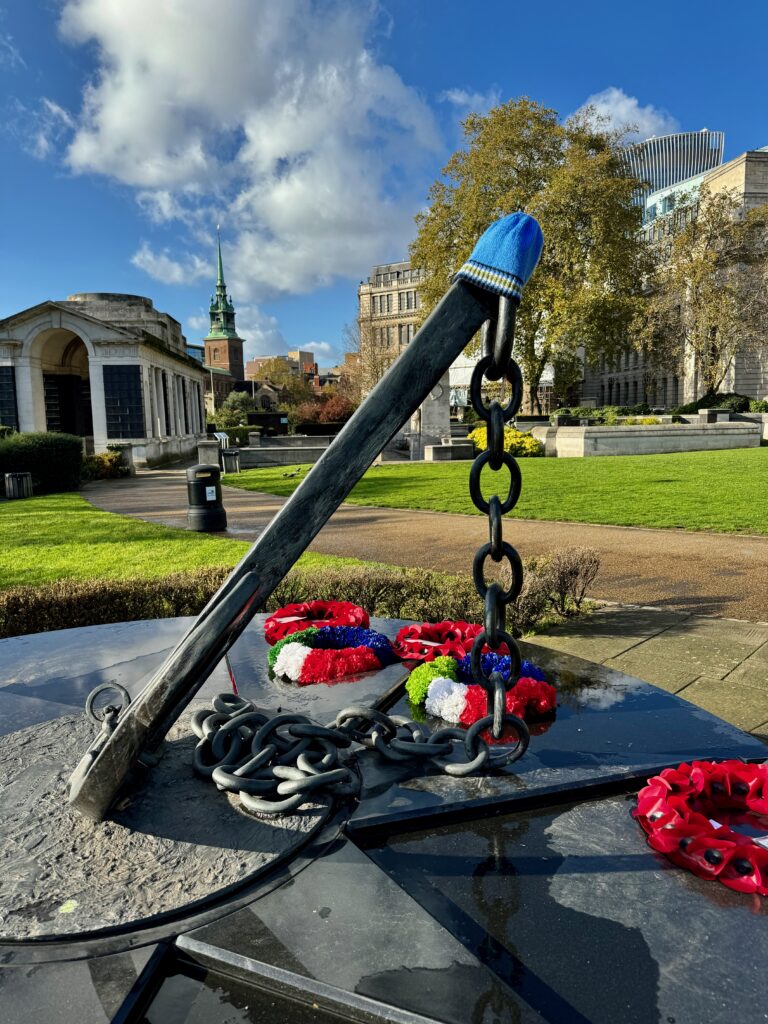
A close up of the little hat …
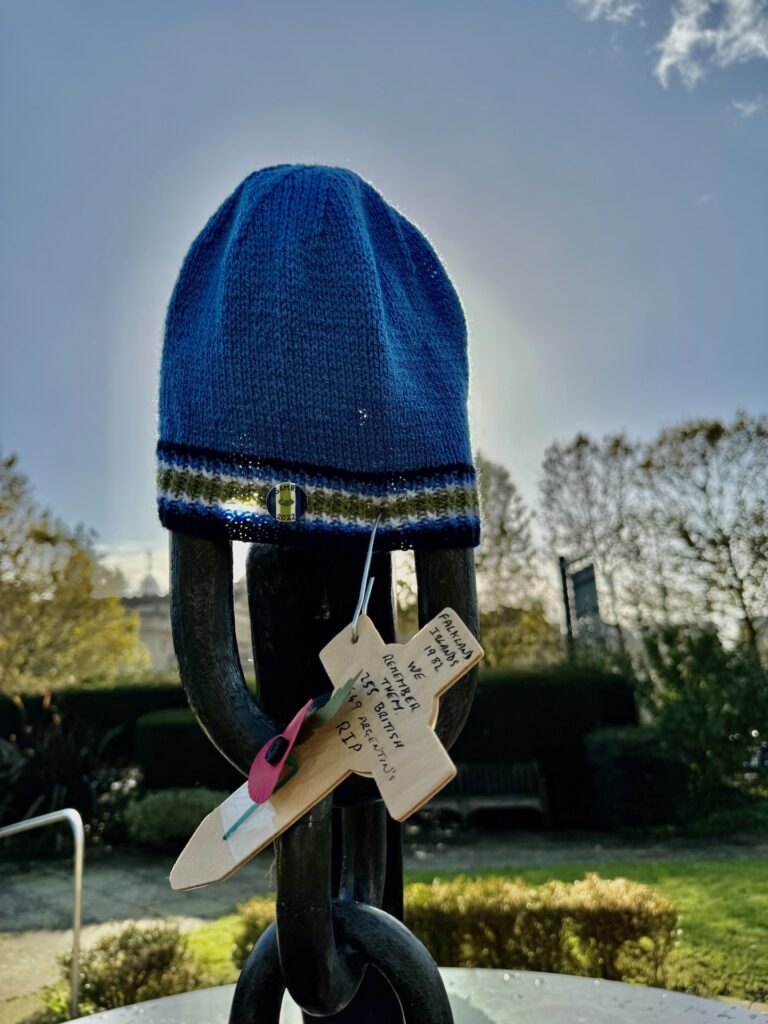
The London Troops Memorial outside the Royal Exchange
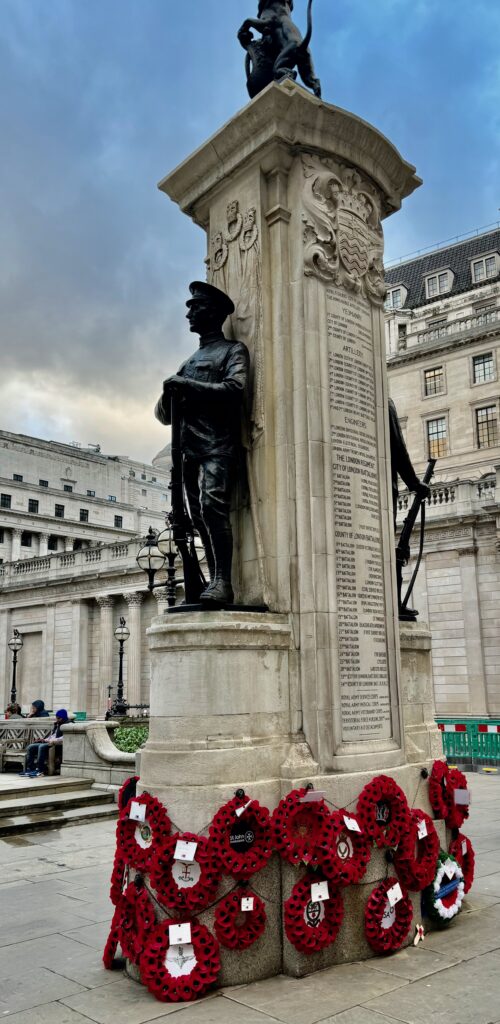
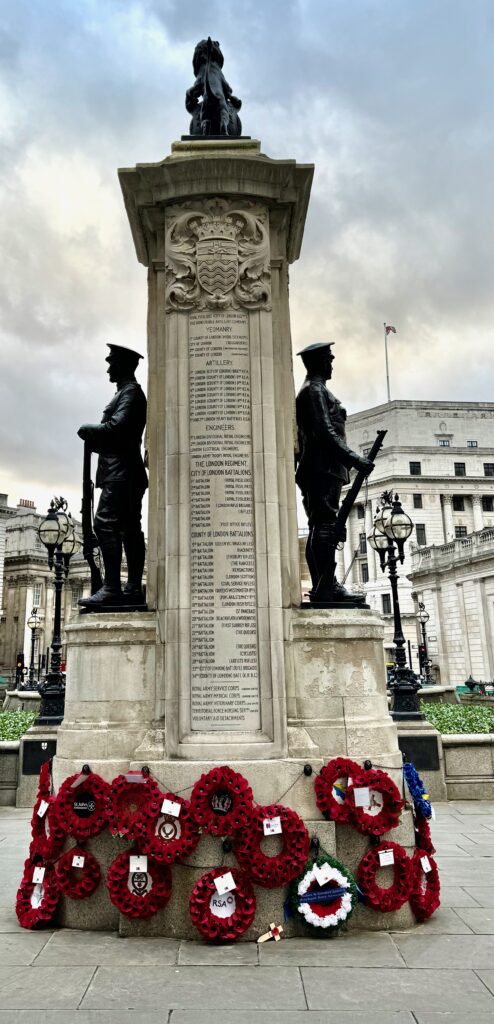
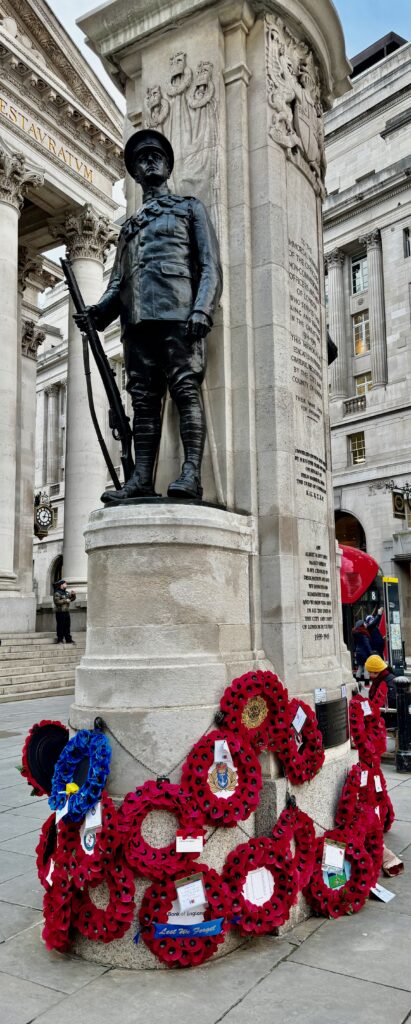
Your attention may be drawn to two battalions with unusual names, the Cyclists and the Artists’ Rifles …
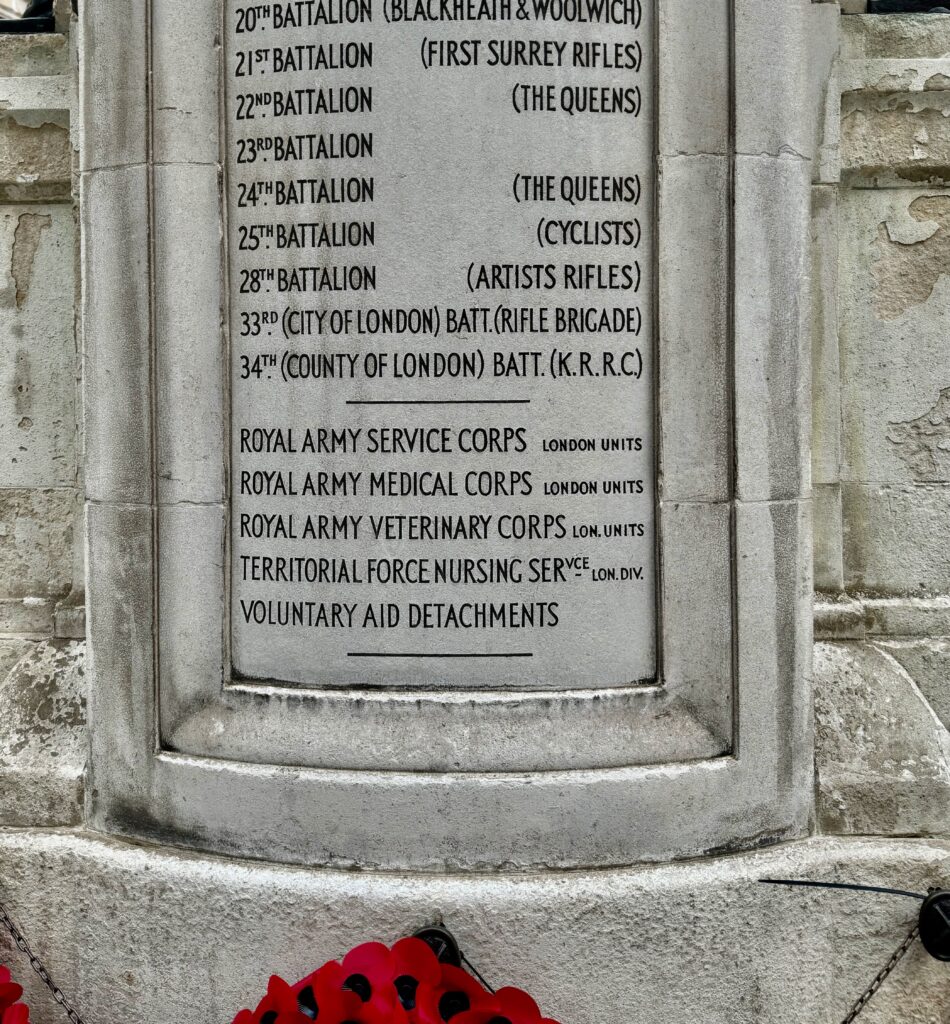
Bicycles were commonly used in the First World War, not only for troop transport, but also for carrying dispatches. Field telephones were limited by the need for cables, and ‘wireless’ communications were still unreliable, so cyclists – and runners, motorbike riders, and pigeons and dogs – were frequently preferred, by the Allies and the German army.
I came across two interesting recruitment posters for the Cyclists at the Imperial War Museum. The first paints a quite romantic picture of the battalion going into combat in the bucolic setting of what looks like an English village. Nothing like the industrial level mass slaughter that these poor men would have to face in the First World War…

This one made me smile taking into account, as it does, the poor state of early 20th century dental hygiene …

The story of the Artists’ Rifles is a fascinating one.
The regiment was formed in 1859 by art student Edward Starling. It was a volunteer regiment and formed out of the widespread fear of a French invasion. Many of those who joined were artists, actors, musicians and architects and its first headquarters was located at Burlington House. The First World War would see the regiment literally leading from the front as they become a training regiment for officers in this period. It is also for this reason that the Artists Rifles had one of the highest casualty rates of any regiment.

This painting, Over the Top by John Nash, depicts his regiment in action. On 30th December 1917, the 1st Artists Rifles counter-attacked at Welsh Ridge, south-west of Cambrai. Nash called the action ‘pure murder’ as most of the company were killed. A sergeant, he counted himself lucky to escape the carnage …

During the Great War, 2,003 of the regiment’s men were killed and over 3,000 wounded. Members of the regiment would be awarded eight Victoria Crosses and over 850 other military awards including the Distinguished Service Order (awarded 52 times) and the Military Cross (awarded 822 times). They were also mentioned in dispatches 564 times.
Incidentally, in the very first episode of the fourth series of Blackadder he becomes an artist, believing that this is his chance to escape the trenches. However, it is revealed that the artist’s role is to undertake a highly dangerous job – to draw the enemy’s defences from No Man’s Land.
The last episode of the series is renowned for its moving climax and you can view it here : Good luck everyone.
On Cornhill, the Archangel Michael holds aloft a flaming sword ……
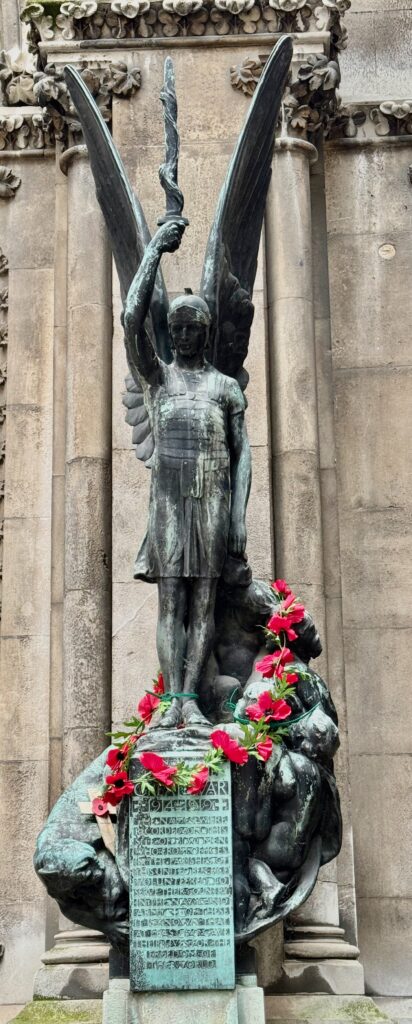
The memorial commemorates 2,130 men from the parish – and the neighbouring City of London parishes of St Peter le Poer and St Benet Fink with which it was merged in 1906 – who served in the British armed forces in the First World War. About 170 died in the war, listed on a roll of honour kept in the church.
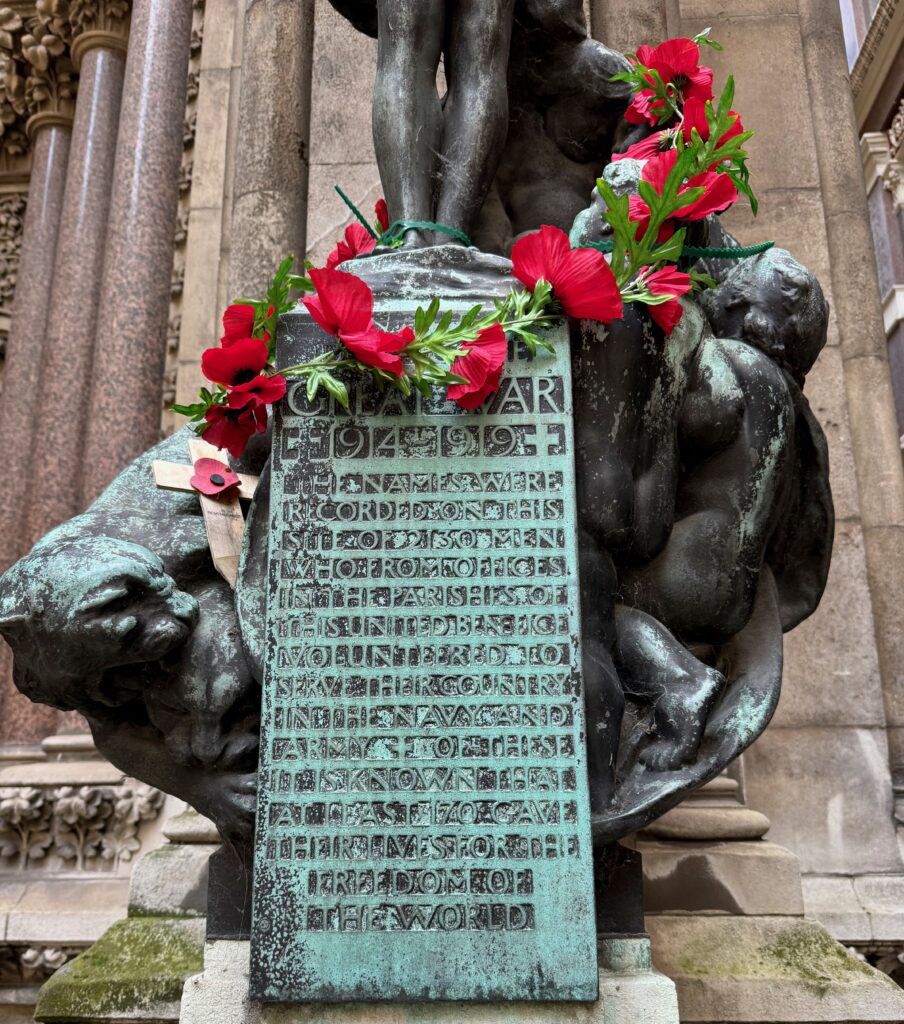
By the angel’s right foot are two lions, one biting the other, representing war; by the left foot are four putti looking upwards, representing peace.
And finally to St Bartholomew the Great at Smithfield …
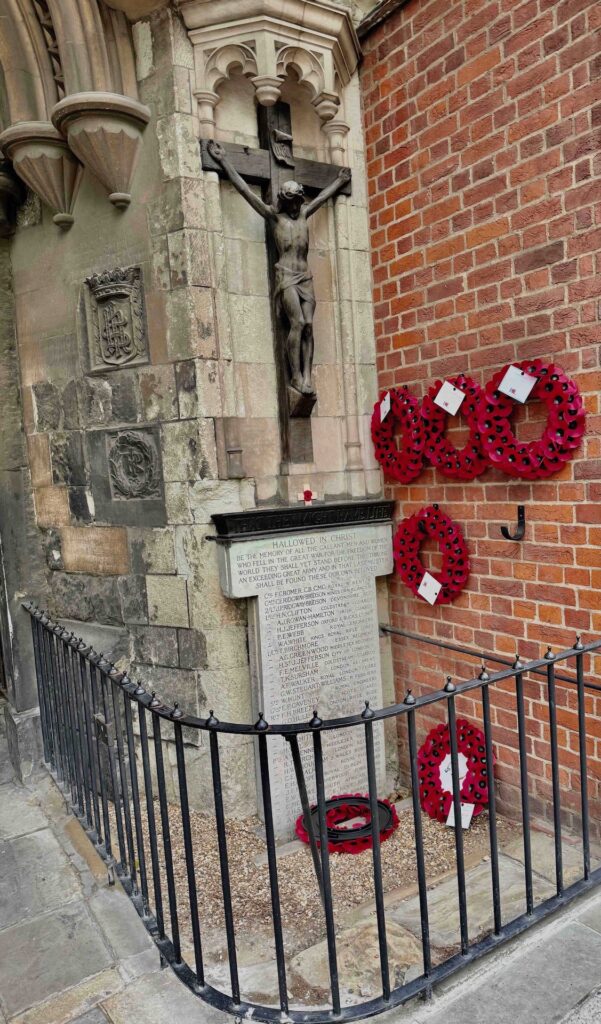
There is a plaque just behind the gate commemorating Sir Aston Webb’s work. It includes his coat of arms (which incorporates a spider, a playful reference to his name) …
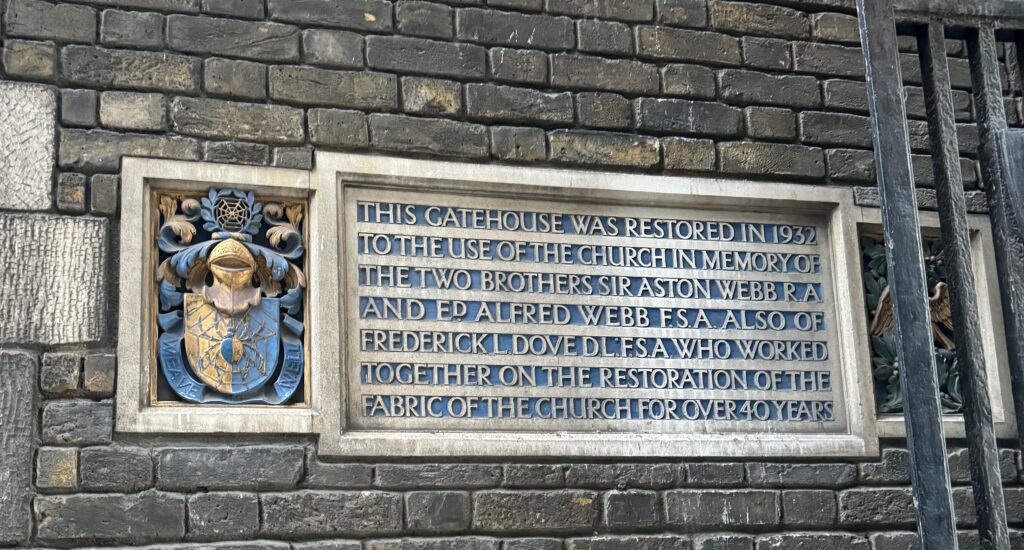
Poignantly, the name Webb also appears on the memorial …

Aston’s son, Philip, was killed in action on 25th September 1916.
And finally, another poem dedicated to seafarers …
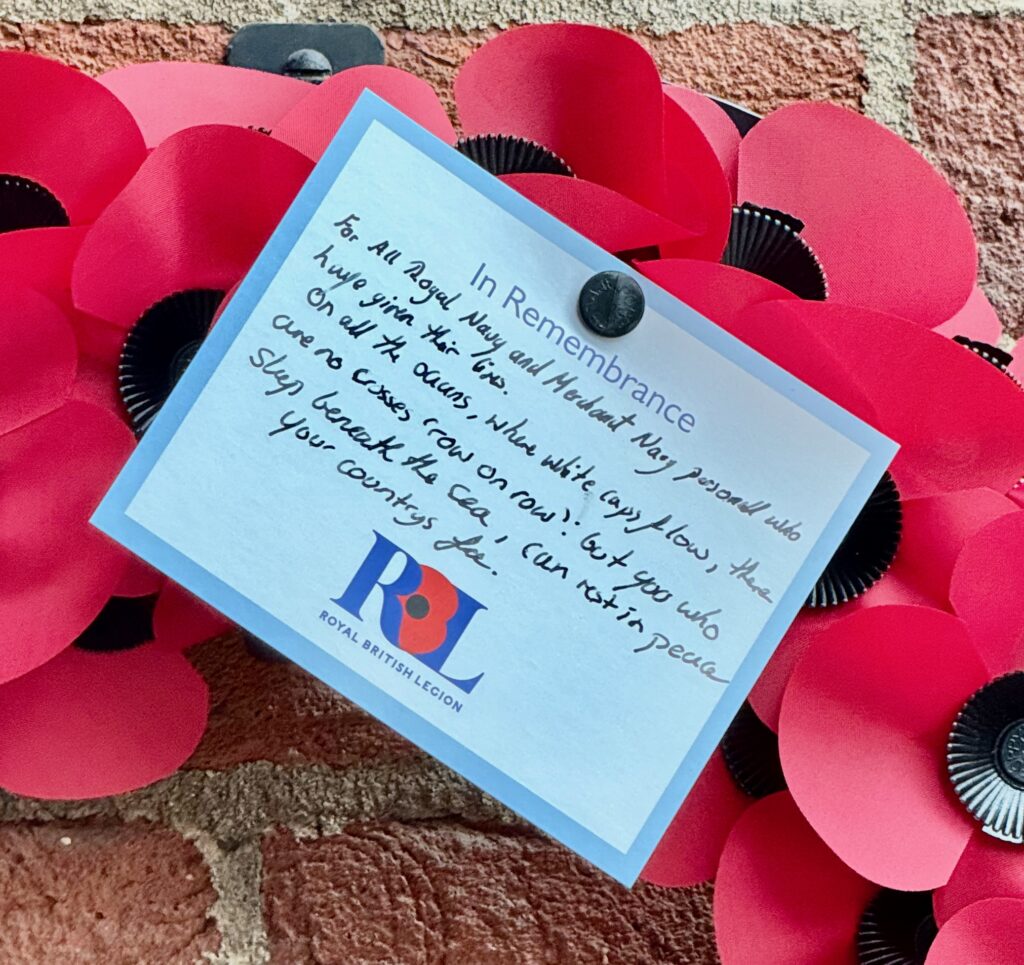
If you would like to follow me on Instagram here is the link …
